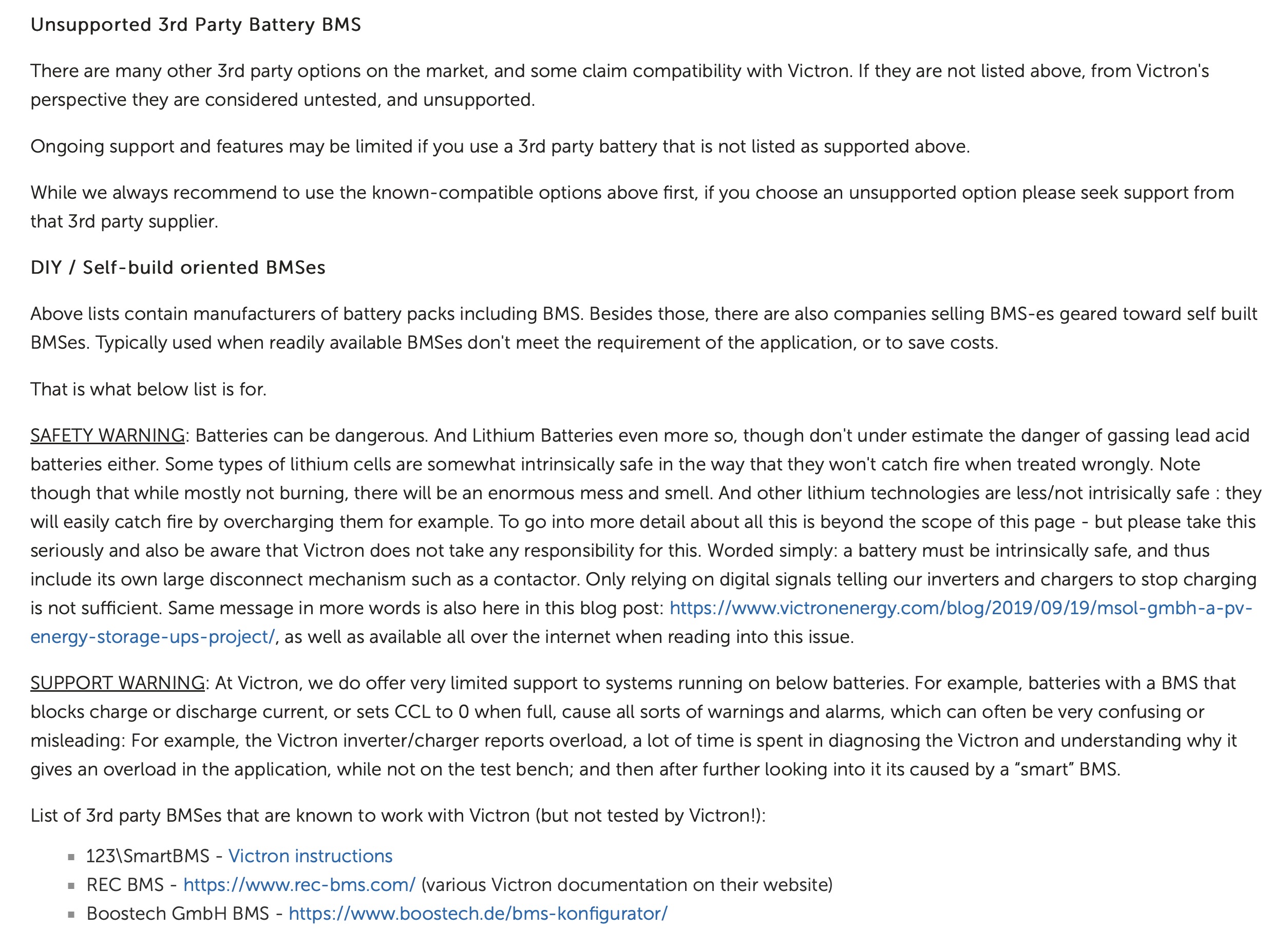Hello everyone,
I noticed today with Cerbo version V3.00 that the BMS specifications of the diyBMS (CAN bus - Charge Voltage Limit CVL) are changed by the Cerbo system.
55.2V was set in the diyBMS and after activating the DC coupled PV feed in and limiting to 100/1000W, the CVL value changed to over 58V!!!! The diyBMS then opened the main contactor.
If I switch off the limitation, the CVL slowly falls to the set value of 55.2V.
After a short time the value rises to 55.4V and falls to 55.1V.
After the update to V3.01, the result was the same.

